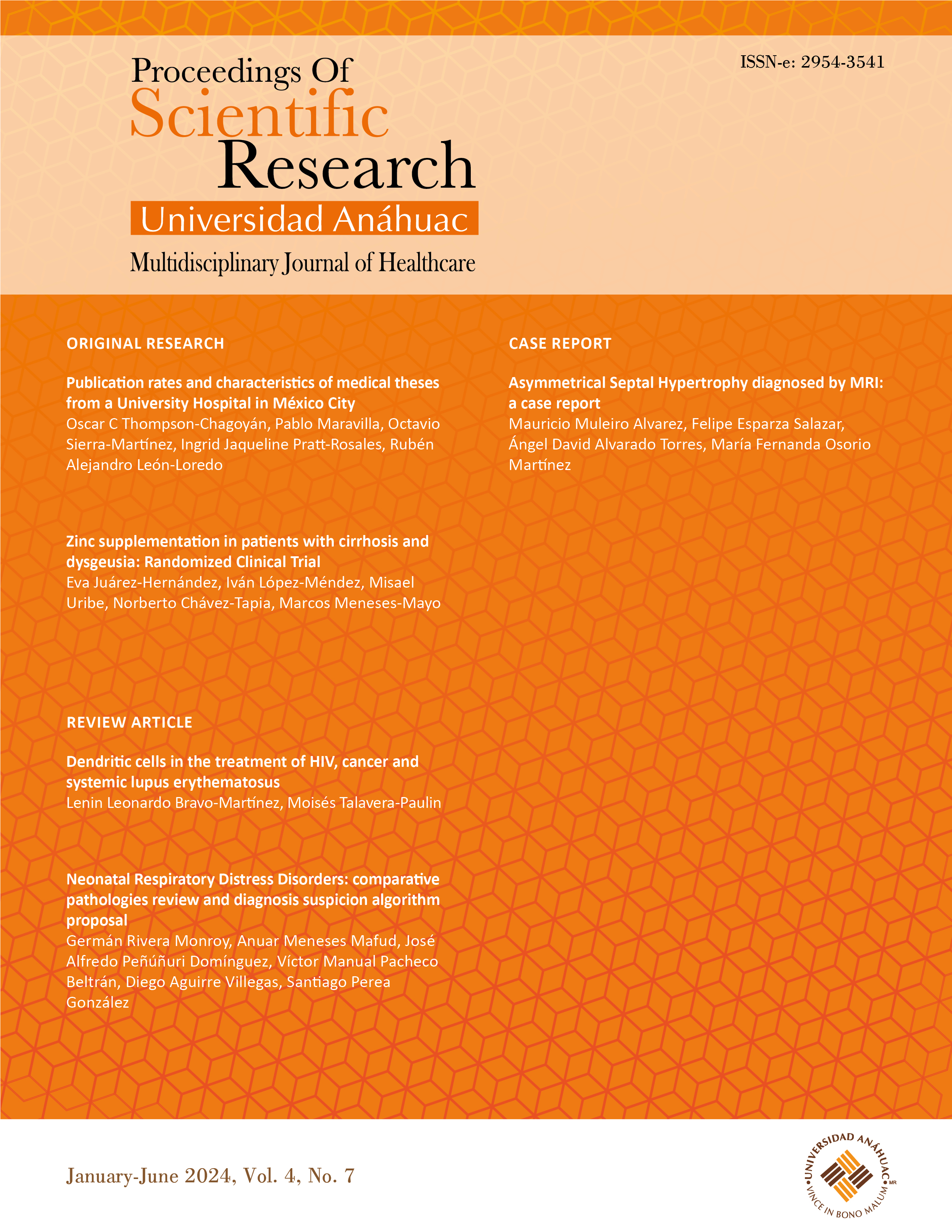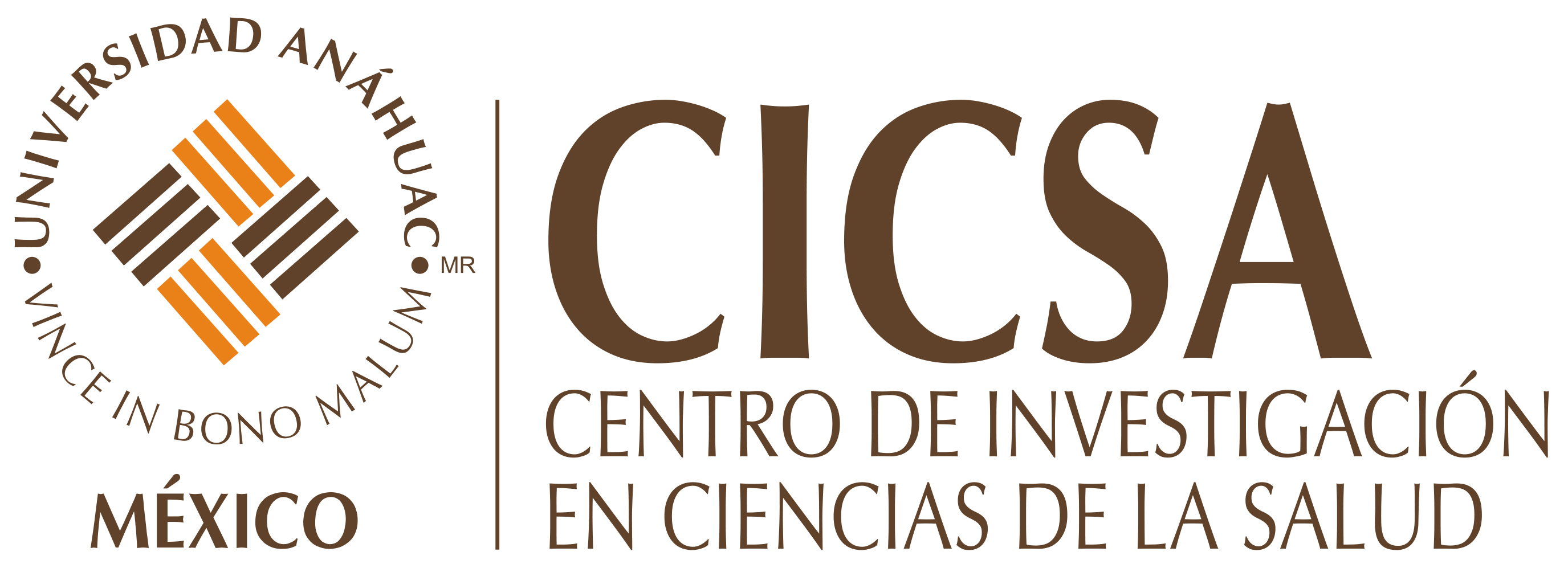Neonatal Respiratory Distress Disorders: Comparative pathologies review and diagnosis suspicion algorithm proposal
DOI:
https://doi.org/10.36105/psrua.2024v4n7.04Palabras clave:
Síndrome de Dificultad Respiratoria Neonatal, enfermedad de la membrana hialina, taquipnea transitoria del recién nacido, síndrome de aspiración meconial, diagnóstico diferencialResumen
Las patologías respiratorias junto con las cardiopatías congénitas representan las principales etiologías de las enfermedades neonatales. El síndrome de distrés respiratorio neonatal engloba varias patologías que comparten la insuficiencia respiratoria como principal manifestación clínica. Durante las últimas décadas se han identificado factores epidemiológicos y de riesgo para trastornos respiratorios, como semanas de gestación cumplidas antes del nacimiento y comorbilidades maternas; sin embargo, la similitud de manifestaciones clínicas, así como la mala comprensión de hallazgos de laboratorio y radiológicos puede conducir a un diagnóstico incorrecto y retrasar el tratamiento óptimo. La enfermedad de la membrana hialina, la taquipnea transitoria del recién nacido y el síndrome de aspiración de meconio representan los tres tipos más frecuentes de síndrome de dificultad respiratoria neonatal. En este trabajo se describen los factores de riesgo de cada enfermedad, la fisiopatología, y de igual forma, se comparan las manifestaciones clínicas así como hallazgos de laboratorio y radiológicos entre ellos. Finalmente, presentamos un algoritmo de diagnóstico diferencial que puede utilizarse para identificar qué síndrome de dificultad respiratoria presenta el recién nacido y, en consecuencia, ofrecer un tratamiento óptimo y oportuno.
Descargas
Referencias
Coto Cotallo GD, López Sastre J, Fernández Colomer B, lvarez Caro F, Ibáñez Fernández A. Recién nacido a término con dificultad respiratoria: enfoque diagnóstico y terapéutico (AEP).2008. Consulted october 15 2022. Available at: http://hdl.handle.net/10651/11831
Yadav S, Lee B, Kamity R. Neonatal Respiratory Distress Syndrome. 2023 Jul 25. In: StatPearls. Treasure Island (FL): StatPearls Publishing; 2023 Jan–. Available at: https://www.ncbi.nlm.nih.gov/books/NBK560779/
Corsini I, Parri N, Ficial B, Dani C. Lung ultrasound in the neonatal intensive care unit: Review of the literature and future perspectives. Pediatr Pulmonol. 2020; 55:1550. https://doi.org/10.1002/ppul.24792 DOI: https://doi.org/10.1002/ppul.24792
Malloy MH, McGovern JP. Hyaline membrane disease (HMD): an historical and Oslerian perspective. J Perinatol. 2018 Dec;38:1602-1606. https://doi.org/10.1038/s41372-018-0237-1 DOI: https://doi.org/10.1038/s41372-018-0237-1
Department of neonatology, Canberra hospital and health services. ACT Government health. HYALINE MEMBRANE DISEASE. Consulted october 15 2022. Available at: https://heal.nih.gov/research/infants-and-children/act-now
Elodie Z. “Pathophysiology of anomalies of alveolar development in the IUGR: experimental and clinical approach” HAL Molec. biol. 2014. Université Ren Descartes-Paris V. French Available at: https://theses.hal.science/tel-01060181v1/document
Reuter S, Moser C, Baack M. Respiratory distress in the newborn. Pediatr Rev. 2014 Oct;35(10):417-28; quiz 429. https://doi.org/10.1542/pir.35-10-417 DOI: https://doi.org/10.1542/pir.35.10.417
Rohwer AC, Oladapo OT, Hofmeyr GJ. Strategies for optimising antenatal corticosteroid administration for women with anticipated preterm birth. Cochrane Database Syst Rev. 2020, Issue 5. Art. No.: CD013633. https://doi.org/10.1002/14651858.CD013633 DOI: https://doi.org/10.1002/14651858.CD013633
McGoldrick E, Stewart F, Parker R, Dalziel SR. Antenatal corticosteroids for accelerating fetal lung maturation for women at risk of preterm birth. Cochrane Database Syst Rev. 2020 Dec 25;12:CD004454. https://doi.org/10.1002/14651858.CD004454.pub4 DOI: https://doi.org/10.1002/14651858.CD004454.pub4
Sweet, D. G., Carnielli, V., Greisen, G., Hallman, M., Ozek, E., te Pas, A., Plavka, R., Roehr, C. C., Saugstad, O. D., Simeoni, U., Speer, C. P., Vento, M., Visser, G. H. A., & Halliday, H. L. (2019). European Consensus Guidelines on the Management of Respiratory Distress Syndrome - 2019 Update. Neonatology, 115(4), 432. https://doi.org/10.1159/000499361 DOI: https://doi.org/10.1159/000499361
Ross N, Suresh SC, Dude A. History of respiratory problems in prior infant and respiratory morbidity in subsequent pregnancy. Am J Obstet Gynecol MFM. 2022 Mar;4:100544. https://doi.org/10.1016/j.ajogmf.2021.100544 DOI: https://doi.org/10.1016/j.ajogmf.2021.100544
Alhassen Z, Vali P, Guglani L, Lakshminrusimha S, Ryan RM. Recent Advances in Pathophysiology and Management of Transient Tachypnea of Newborn. J Perinatol. 2021 Jan;41(1):6-16. https://doi.org/10.1038/s41372-020-0757-3 DOI: https://doi.org/10.1038/s41372-020-0757-3
Luca M., Olga R., Maria G., Matteo B. Non-invasive respiratory support for the management of transient tachypnea of the newborn, 2020. Cochrane Database Syst Rev. 2020. https://doi.org/10.1002/14651858.CD013231.pub2 DOI: https://doi.org/10.1002/14651858.CD013231.pub2
Gupta, N., & Chawla, D. Fluid restriction in the management of transient tachypnea of the newborn. Cochrane Database Syst Rev. 2015. https://doi.org/10.1002/14651858.CD011466.pub2 DOI: https://doi.org/10.1002/14651858.CD011466
Monfredini C, Cavallin F, Villani PE, Paterlini G, Allais B, Trevisanuto D. Meconium Aspiration Syndrome: A Narrative Review. Children (Basel). 2021 Mar 17;8:230. https://doi.org/10.3390/children8030230 DOI: https://doi.org/10.3390/children8030230
Olicker AL, Raffay TM, Ryan RM. Neonatal Respiratory Distress Secondary to Meconium Aspiration Syndrome. Children (Basel). 2021 Mar 23;8:246. https://doi.org/10.3390/children8030246 DOI: https://doi.org/10.3390/children8030246
Chettri S, Bhat BV, Adhisivam B. Current Concepts in the Management of Meconium Aspiration Syndrome. Indian J Pediatr. 2016 Oct;83:1125-30. https://doi.org/10.1007/s12098-016-2128-9 DOI: https://doi.org/10.1007/s12098-016-2128-9
Setty SG, Batra M, Hedstrom AB. The Silverman Andersen respiratory severity score can be simplified and still predicts increased neonatal respiratory support. Acta Paediatr. 2020 Jun;109:1273-1275. https://doi.org/10.1111/apa.15142 DOI: https://doi.org/10.1111/apa.15142
Tana M, Tirone C, Aurilia C, Lio A, Paladini A, Fattore S, Esposito A, De Tomaso D, Vento G. Respiratory Management of the Preterm Infant: Supporting Evidence-Based Practice at the Bedside. Children (Basel). 2023 Mar 10;10:535. https://doi.org/10.3390/children10030535 DOI: https://doi.org/10.3390/children10030535
Osman A, Halling C, Crume M, Al Tabosh H, Odackal N, Ball MK. Meconium aspiration syndrome: a comprehensive review. J Perinatol. 2023. 43, 1211–1221. https://doi.org/10.1038/s41372-023-01708-2 DOI: https://doi.org/10.1038/s41372-023-01708-2
Yang G, Qiao Y, Sun X, Yang T, Lv A, Deng M. The clinical effects of high-frequency oscillatory ventilation in the treatment of neonatal severe meconium aspiration syndrome complicated with severe acute respiratory distress syndrome. BMC Pediatr. 2021 Dec 10;21:560. https://doi.org/10.1186/s12887-021-03042-y DOI: https://doi.org/10.1186/s12887-021-03042-y

Descargas
Publicado
Número
Sección
Licencia
Derechos de autor 2024 Germán Rivera Monroy, Anuar Meneses Mafud, José Alfredo Peñúñuri Domínguez, Víctor Manual Pacheco Beltrán, Diego Aguirre Villegas, Santiago Perea González

Esta obra está bajo una licencia internacional Creative Commons Atribución-NoComercial-SinDerivadas 4.0.
Todo el contenido intelectual que se encuentra en la presente publicación periódica se licencia al público consumidor bajo la figura de Creative Commons©, salvo que el autor de dicho contenido hubiere pactado en contrario o limitado dicha facultad a “Proceedings of Scientific Research Universidad Anáhuac. Multidisciplinary Journal of Healthcare©” o “Universidad Anáhuac México©” por escrito y expresamente.
Proceedings of Scientific Research Universidad Anáhuac. Multidisciplinary Journal of Healthcare se distribuye bajo una Licencia Creative Commons Reconocimiento-No comercial-Sin derivados 4.0 Internacional (CC BY-NC-ND 4.0).
El autor conserva los derechos patrimoniales sin restricciones y garantiza a la revista el derecho de ser la primera publicación del trabajo. El autor es libre de publicar en cualquier otro medio su artículo, como un repositorio institucional.














